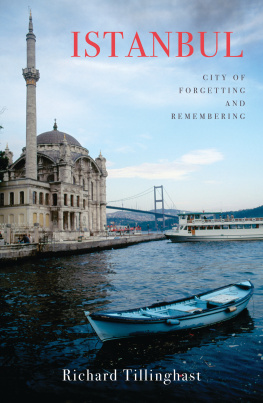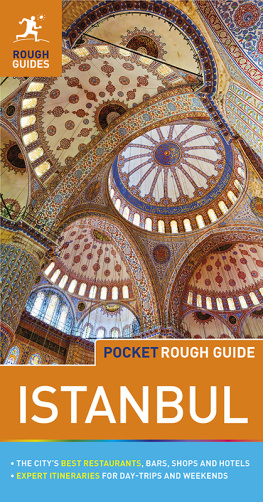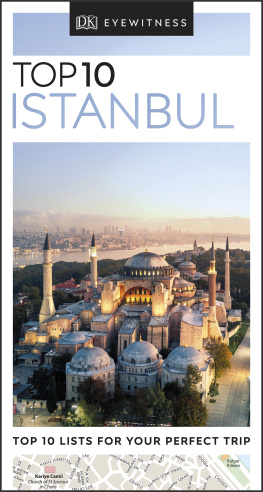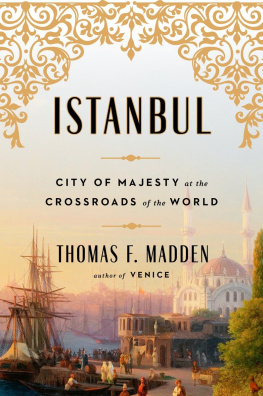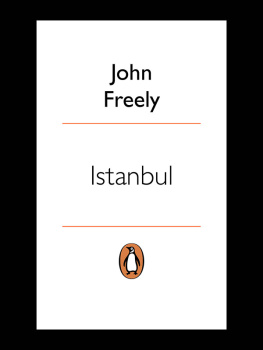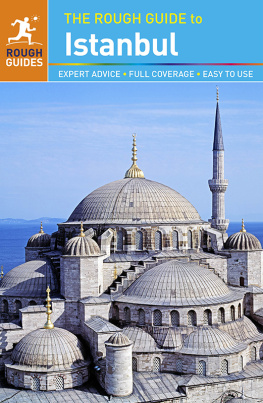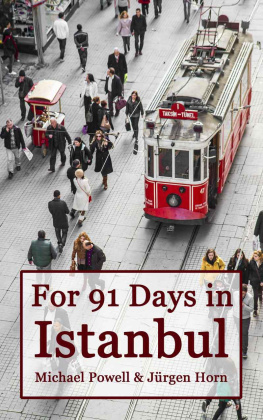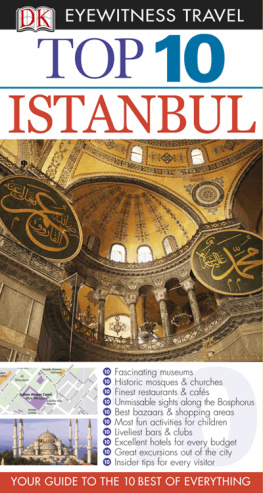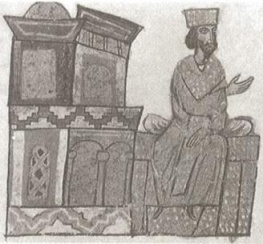1
First Impressions
ANYONE WHO KNOWS ISTANBUL will tell you that the best way to arrive in the Queen of Cities is by sea. On my first visit, I came here by boat from Greece. As we steamed up through the Dardanelles, W.B. Yeatss lines came to mind: And therefore I have sailed the seas and come / To the holy city of Byzantium. We docked at Karaky, home in Byzantine days to Genoese sailors. I remember the metallic surfaces that morning, the monotone grey, the harshness of the arrival hall where we disembarked and cleared customs. Istanbul does not present a welcoming face to newcomers perhaps no great city does. It was clear that we were no longer in the Mediterranean, but had entered a climate more Balkan than Aegean, a city that seemed on the face of it to have more in common with Sofia or Belgrade, which were once part of the Ottoman Empire, than with those sun-drenched former seats of empire, Rome and Venice.
Few arrive in Istanbul nowadays the way I did back then. Times have changed; these days I fly like everyone else. And no matter how well I have planned my arrival, in a matter of minutes the city draws me into its own irrational and unpredictable way of doing things. So here I am in the passenger seat of a taxi, no seat belt, with a driver who hurtles through traffic in a way that would never be countenanced in Europe or North America. I have driven in Paris, in Rome, and even in Istanbul itself before the recent population explosion and the coming of the motorways, but I would not care to take the wheel on a road like this.
Lanes mean nothing to my cabbie, who says his name is Osman, nor to anyone else on the road. Because traffic is so congested this Saturday night, Osman drives most of the way on the right-hand shoulder, edging around lorries, weaving in and out among taxis and passenger cars at breakneck speed, sounding his horn almost continuously. We pass a truck with a cargo of onions just visible underneath an old kilimthat has been tied down over them. At the edge of the motorway I catch a glimpse of a family of three, huddled in a primordial group on the edge of the road. The man wears black trousers and a white shirt and sports a moustache the generic costume for an urban Turk of a certain class. His wife, wearing a head scarf, holds the baby. What is their story? Why are they standing there at the side of this dangerous highway?
The little family is a fleeting glimpse in the headlong rush of traffic. In Osmans cab the windows are rolled down: we are listening to Turkish arabesk, that haunting music that tells you that this is not Europe, and will never be Europe no matter whether they eventually admit Turkey into the EU or not. I am able to make out some of the words of the song. A man is singing about his father, dead now, a man like a lion, may Allah build him a fine tomb. My driver surprises me by asking my permission to smoke, and I say sure, go ahead, even though I loathe cigarette smoke. I dare not impinge upon the mans sense of who he is.
Osman thumps his chest and proclaims that he is a great driver. I tell him he drives like a lion. He reminds me of the babozuk, or delibairregulars who fought with the regular Ottoman armies when they captured Constantinople broken-headed or crazy-headed free spirits, as out of control and fear-inducing as the wild cymbal crashes and wailing pipes the army bands played before they attacked. Finally we reach the city and drive along the Golden Horn, absorbed into the great fulcrum of energy that is Istanbul.
2
Istanbul and Constantinople
A CITY IS A LIVING BEING, with a memory of its own. The more we know of what Istanbul remembers, and even what it tries to forget, the more we enter into its essence. Istanbul has its characteristic sounds ships horns from the Bosphorus, the cries of seagulls, taxis hooting, workmen hammering away at copper and brass in ateliers around the Grand Bazaar, street vendors hawking their wares, and the call to prayer, that haunting recitation one hears five times a day, from before sunrise until after dark, knitting together the hours.
And Istanbul has its smells: lamb kebabs and corn on the cob roasting over charcoal braziers, diesel exhaust from boats and trucks, cigarette smoke, an indefinable aroma of drains from a city with a 2000-year-old sewer system; all of these odours dissolving in the bracing salt air of the sea. On a hot day one is refreshed by the acrid fragrance of fig trees, and the sweet perfume of acacias.
In early autumn, thousands of storks and large birds of prey fly over the city on their annual migration from Europe to Africa. In the spring, on their journey north, they return. The skies are full of them and the creak of their wings as they pass over. Storks are the anarchists of the bird world. They dont line up or form Vs as geese do they straggle all over the sky. For the Persian-Jewish Istanbullu poet Murat Nemet-Nejat in his memoir Istanbul Noir, this migration is an emblem of larger patterns:

